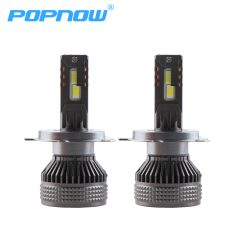Moisture or water droplets are among the common issues you will encounter in the car lighting system, most prominently in the headlights. While it may not seem much of an issue initially, with time, it may affect the state of the headlights, and you may notice reduced lighting power. Considering how important the headlight is in visualization, you need to know how to eliminate moisture from headlights. A sure way to keep you ahead of this problem is understanding how to seal headlights from moisture.
 Besides reduced visibility, there is also the issue of damaged headlight assembly due to rusting, which eats the metal parts. Before looking at how to deal with the issue at hand, you should know what causes it to prevent it from happening. There are several causative factors of condensation, and we will look at them to give you a hint on its preventive solutions.
Besides reduced visibility, there is also the issue of damaged headlight assembly due to rusting, which eats the metal parts. Before looking at how to deal with the issue at hand, you should know what causes it to prevent it from happening. There are several causative factors of condensation, and we will look at them to give you a hint on its preventive solutions.
To understand why there is moisture in your headlights, there are things you need to know. These are the headlamp assembly structure and forces of nature, most precipitation. On the structure, most headlights have two vents, on the top and bottom, and they play a vital role in pressure control in the headlight chamber. Air gets in and out of these car lights via the vents to equalize pressure on the outside and inside. With air in the chamber, it sometimes cools and becomes water droplets due to the water vapor component.
The cooling mostly takes place when the outer lens cools faster than the inside. It is why you will find a water film inside the headlight, mostly in the morning. When temperatures rise, the water will evaporate and escape the headlight assembly. Generally, moisture on the headlight in small quantities is a normal occurrence. However, if it accumulates and forms something like a pool, then there is an issue. It could be cracks or fissures in the assembly. The heat from the headlight bulb will cause it to form a vapor, and it may affect your visibility when driving. If you come across such a scenario, you should sort it out immediately.
Aside from cracks, the issue may be a faulty connection. In this situation, the culprit might be worn out vent caps, which will allow both water and air to get into the headlight chamber. Also, pay attention to bulbs O-ring. The O-ring is a rubber ring around the base, and it acts as a plug to prevent water entry. If the rubber wears out, water will get in, and it may be difficult to get out.






